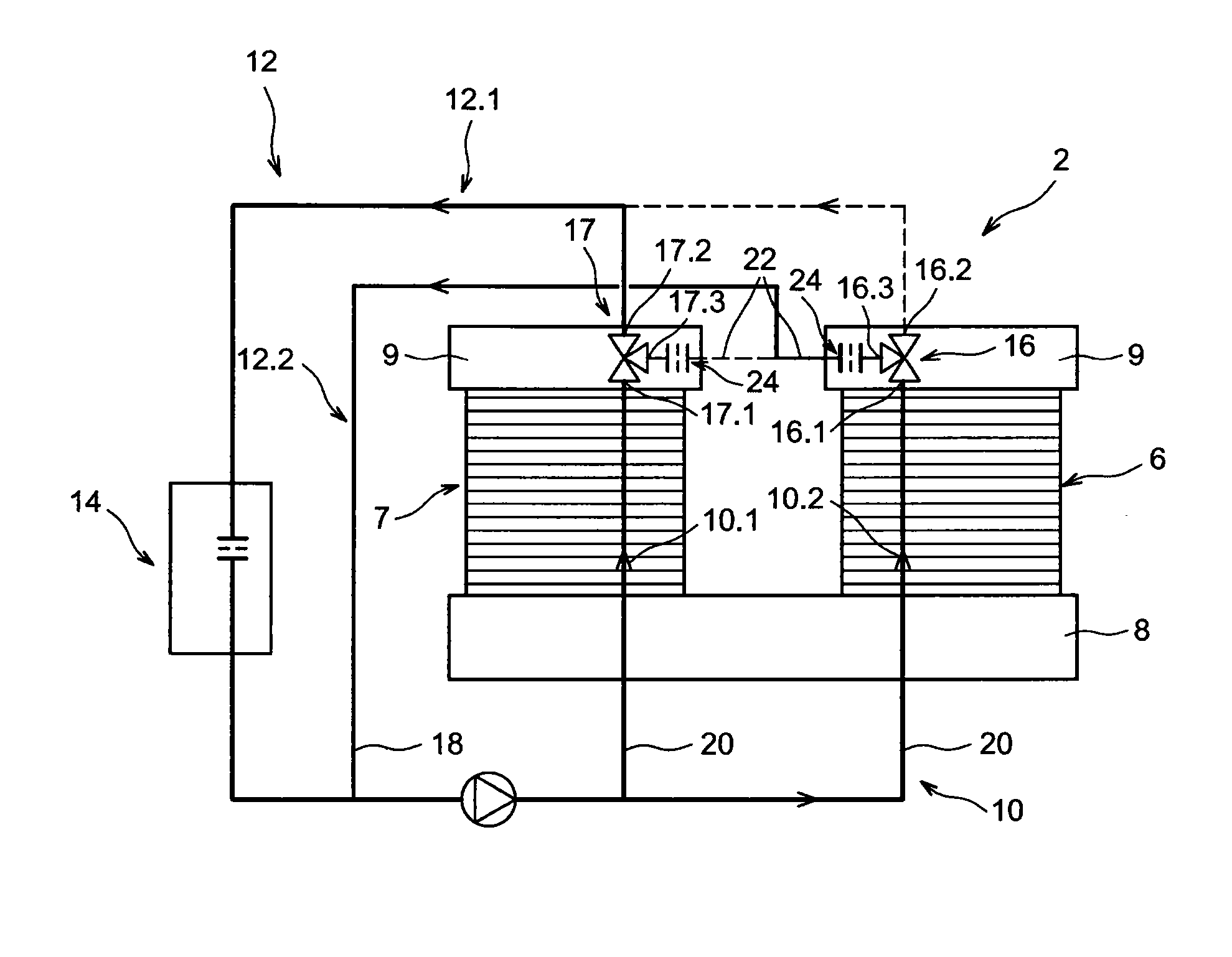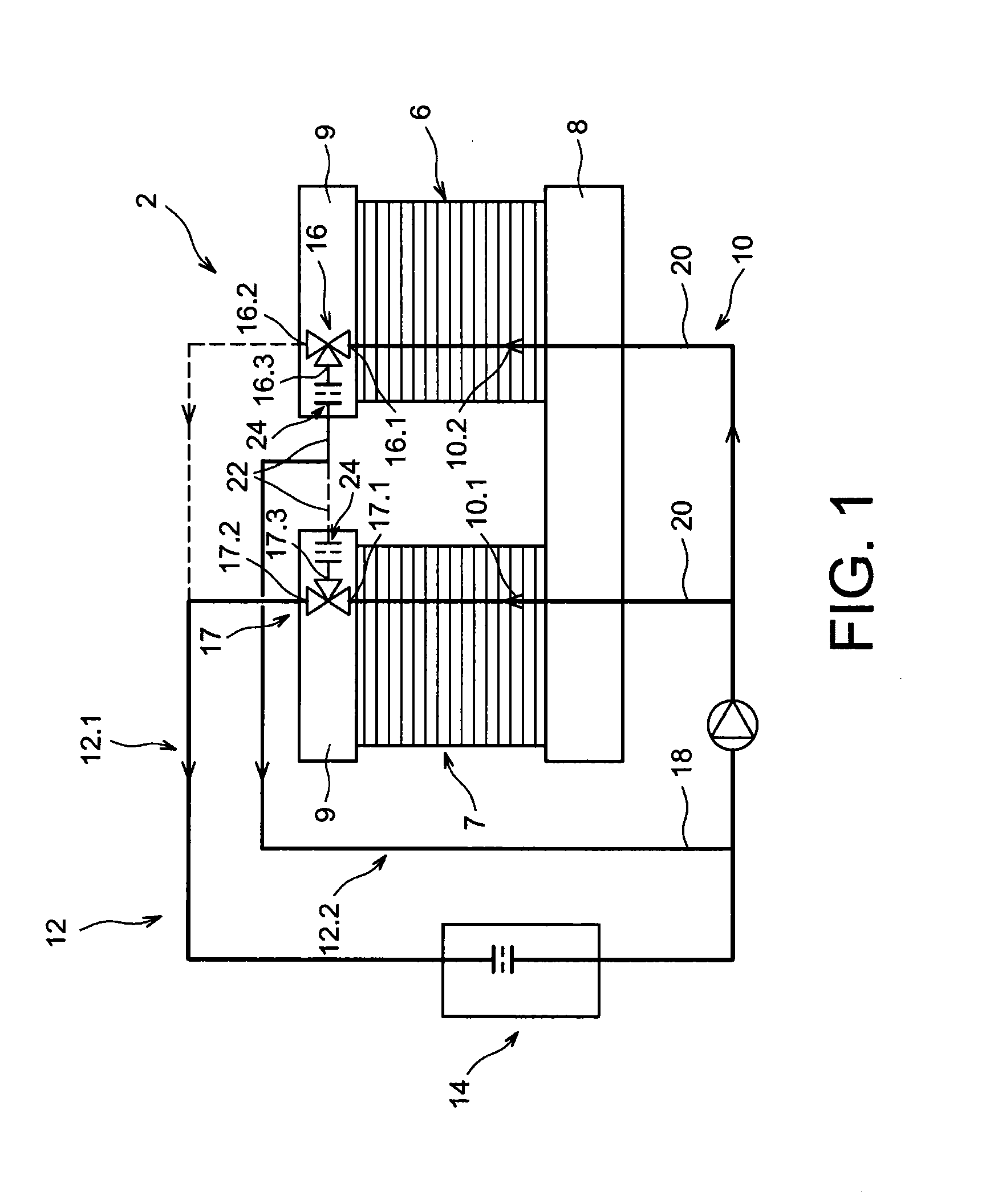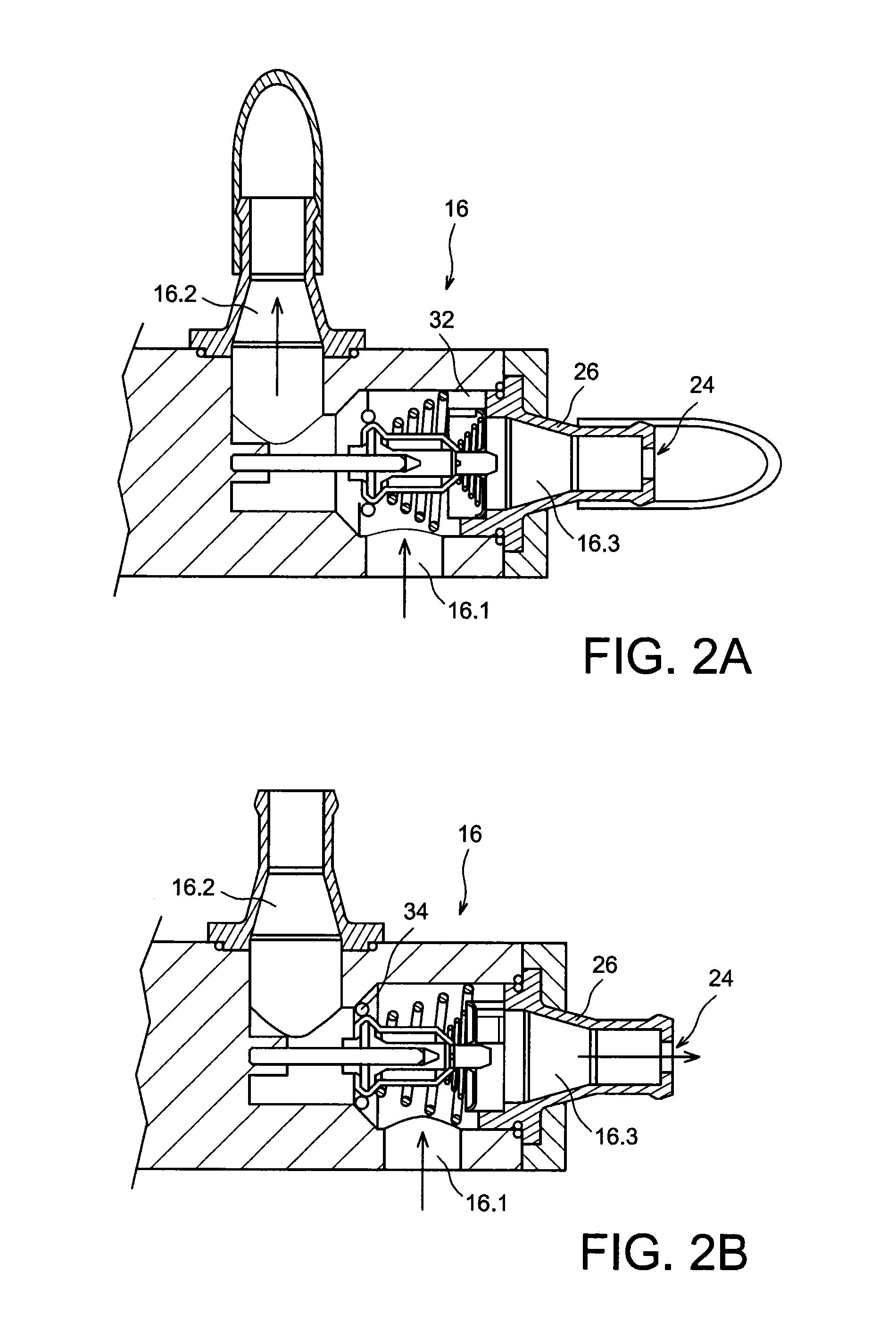Fuel cell with improved thermal management
a fuel cell and thermal management technology, applied in the direction of fuel cells, fuel cell auxilaries, electrochemical generators, etc., can solve the problems of increasing head loss, reducing the temperature of the second stack, and damage to the material making up the fuel cell, so as to avoid the effect of heat imbalance between the stacks
- Summary
- Abstract
- Description
- Claims
- Application Information
AI Technical Summary
Benefits of technology
Problems solved by technology
Method used
Image
Examples
Embodiment Construction
[0034]In FIG. 1, there can be seen a schematic representation of a fuel cell 2 equipped with a heat control system 4.
[0035]The fuel cell 2 comprises two stacks 6, 7 of electrochemical cells comprised of bipolar plates and ion exchange membranes alternately provided, and downstream 8 and upstream 9 end plates on either side of the stacks.
[0036]The end plates 8, 9 exert a compressive strain onto the stacks 6, 7 to ensure an electrical conduction evenly distributed throughout the surface of the elements making up the cells. In the example represented, the cell comprises an upstream end plate common to both stacks, but they could be separated. The downstream end plates could also be replaced by a common plate.
[0037]Besides, the supply of cells with reactive fluid, for example hydrogen on the one hand and oxygen on the other hand, is made through either or both end plates 8, 9. The end plate(s) comprise(s) supply and discharge ports connected both to a circuit within the stacks, and to a...
PUM
| Property | Measurement | Unit |
|---|---|---|
| temperature | aaaaa | aaaaa |
| temperature | aaaaa | aaaaa |
| temperature | aaaaa | aaaaa |
Abstract
Description
Claims
Application Information
 Login to View More
Login to View More - R&D
- Intellectual Property
- Life Sciences
- Materials
- Tech Scout
- Unparalleled Data Quality
- Higher Quality Content
- 60% Fewer Hallucinations
Browse by: Latest US Patents, China's latest patents, Technical Efficacy Thesaurus, Application Domain, Technology Topic, Popular Technical Reports.
© 2025 PatSnap. All rights reserved.Legal|Privacy policy|Modern Slavery Act Transparency Statement|Sitemap|About US| Contact US: help@patsnap.com



